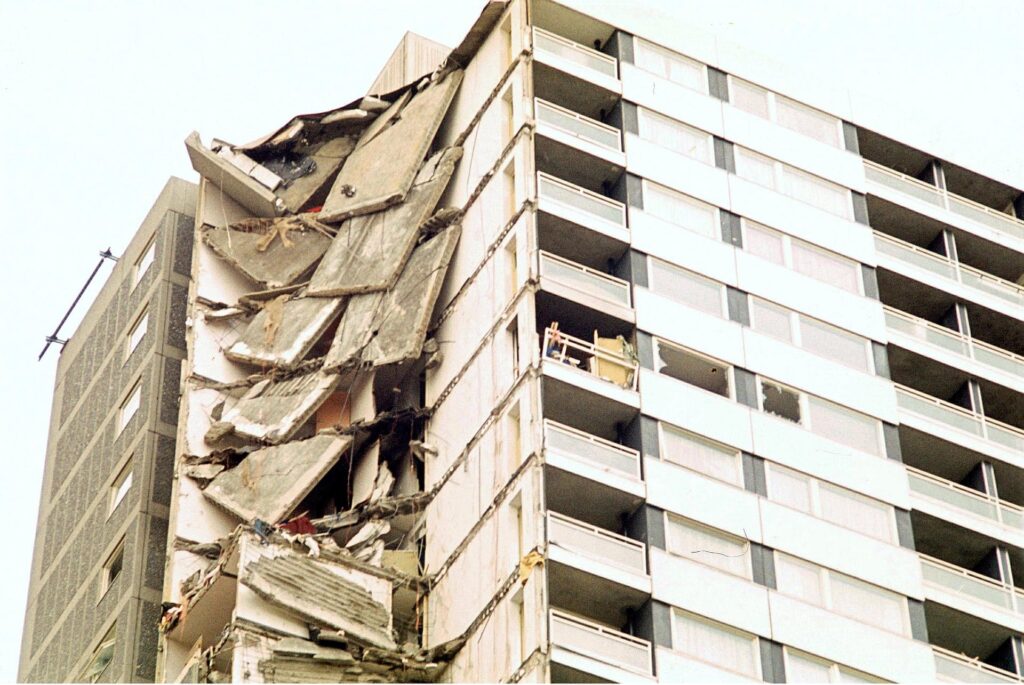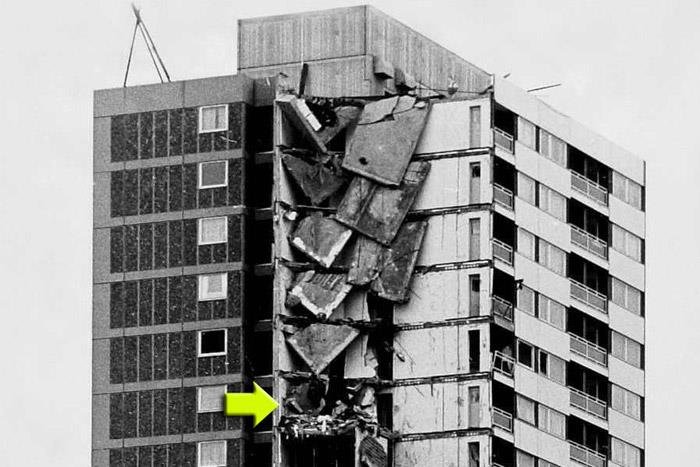This article explores the concept of structural redundancy and progressive collapse and also identifies the means by which engineers refine redundancy to prevent progressive collapse and enhance structural safety

Structural redundancy is a fundamental principle in engineering that ensures buildings and infrastructure remain stable despite unexpected failures. Redundant systems provide alternative load paths, allowing structures to redistribute forces if one or more elements fail. This principle is essential in designing resilient structures that can withstand various hazards such as earthquakes, explosions, and accidental overloads. Without redundancy, the failure of a single component can lead to a progressive collapse, endangering lives and property.
Progressive collapse occurs when the failure of one structural element triggers a chain reaction that leads to the failure of an entire system. This phenomenon has caused some of the most devastating failures in history. Engineers must design structures that prevent progressive collapse by incorporating redundancy and ensuring adequate load redistribution. Structural integrity often depends on understanding failure mechanisms and designing systems that can resist them effectively.
Several notable disasters have demonstrated the consequences of insufficient redundancy. The Ronan Point apartment collapse in 1968 showed how the failure of one corner of a building could lead to cataclysmic failure. Similarly, the collapse of the World Trade Center highlighted the need for advanced structural analysis and fire resistance strategies. Thus, this article explores the concept of structural redundancy the means by which engineers refine redundancy to prevent progressive collapse and enhance structural safety
Understanding Structural Redundancy
Structural redundancy as earlier stated refers to the ability of a structure to sustain loads after the failure of one or more critical elements. This principle ensures that local failures do not cause total structural collapse. Engineers incorporate redundancy to enhance safety and improve the durability of buildings, bridges, and other infrastructure.
Redundant structures contain multiple load paths that allow forces to redistribute if an element becomes damaged. Without redundancy, a structure relies solely on individual members, making it vulnerable to sudden failure. Redundancy provides additional strength and prevents catastrophic failures under extreme conditions. Engineers apply redundancy to both new designs and retrofitting projects.
There are three main types of redundancy in structural engineering:
- Load path redundancy: involves designing structures with multiple paths for force transfer, ensuring alternative routes exist if one component fails.
- Material redundancy: incorporates stronger or additional materials to improve resilience.
- Geometric redundancy: optimizes the layout of structural elements to maintain stability despite localized damage.
Engineers often combine these redundancy types to enhance structural robustness.
Progressive Collapse Mechanism
Progressive collapse is a failure sequence where the failure of one structural element initiates a series of failures that lead to complete collapse of the structural system. This failure mechanism is often disproportionate to the initial cause. Progressive collapse can result from design flaws, material weaknesses, poor construction practices, or extreme loads such as explosions or seismic activity.
One of the most common types of progressive collapse is the “domino effect.” In this mechanism, the failure of a vertical load-bearing element causes adjacent columns or walls to collapse. As structural components lose support, they fall in succession, leading to the rapid destruction of the building. This type of failure is particularly dangerous in multi-story buildings where gravity loads amplify the collapse process.
Another failure mechanism is the “instability effect,” where local structural failure leads to excessive deformations that compromise the entire system. In this scenario, large deflections or rotations disrupt the balance of the structure, causing multiple elements to fail simultaneously. Engineers mitigate these risks by strengthening connections and ensuring the presence of secondary load paths. Proper design detailing prevents local failures from escalating into complete collapses.
Historical Cases of Progressive Collapse
The Ronan Point apartment collapse in London is one of the most well-known cases of progressive failure (Figure 1). A gas explosion on an upper floor caused the failure of a single load-bearing wall. The loss of this critical structural component led to the collapse of several floors, demonstrating the dangers of insufficient redundancy. Engineers learned valuable lessons from this event, leading to stricter regulations for structural connections and load transfer mechanisms.

The collapse of the World Trade Center in 2001 highlighted the impact of extreme events on structural redundancy (Figure 2). The initial impact from the aircraft weakened the support columns, while the subsequent fire compromised the remaining structure. The progressive failure sequence caused both towers to collapse completely. This disaster emphasized the need for enhanced fire-resistant materials, better connection detailing, and advanced progressive collapse analysis in high-rise structures.

Another tragic example is the Hyatt Regency walkway collapse in 1981. The failure occurred due to a flawed design in the hanger rod connections of the suspended walkways. The insufficient load-carrying capacity led to a sudden collapse, killing and injuring many occupants. This case underscored the importance of redundancy in load-bearing components and the necessity of thorough design verification. Engineers now implement stricter quality control procedures to prevent similar failures.
Designing for Structural Redundancy
Engineers incorporate redundancy into designs through careful material selection, detailing, and structural configuration. A key approach is ensuring multiple load paths exist so forces can redistribute safely in case of failure. This design strategy prevents localized damage from escalating into complete collapse.
Structural detailing plays a significant role in redundancy. Engineers design strong and ductile connections to transfer loads even when one component fails. Moment-resisting frames, braced systems, and continuous load paths help maintain stability. Redundant elements such as secondary beams, columns, and lateral supports further enhance structural integrity.
Advanced structural analysis methods may also help assess redundancy and identify weak points before construction begins. Engineers use nonlinear finite element analysis to simulate failure scenarios and refine designs accordingly. Progressive collapse modeling allows engineers to predict how a structure will behave under extreme conditions. These methods help develop safer and more resilient structures.
Code Requirements for Redundancy and Collapse Prevention
Structural design codes specify redundancy requirements to ensure buildings and infrastructure remain safe under unexpected conditions. Eurocode, American standards, and other international guidelines provide comprehensive recommendations for preventing progressive collapse. These standards require engineers to consider alternative load paths and ensure structural integrity.
The Eurocode emphasizes robustness through tying elements, alternative load path strategies, and key element design. These provisions prevent localized failures from propagating through a structure. Engineers must follow these guidelines to enhance the reliability of structural systems and mitigate risks.
In the United States, the General Services Administration (GSA) and Unified Facilities Criteria (UFC) provide detailed guidelines for progressive collapse prevention. These standards apply to government buildings, high-occupancy structures, and critical infrastructure. Engineers must perform redundancy assessments and progressive collapse analyses for buildings that require enhanced security and resilience.
Material Selection and Redundancy
Material properties significantly influence structural redundancy. Engineers select materials based on strength, ductility, and durability to improve the robustness of structures. Steel and reinforced concrete are widely used because of their high load-carrying capacity and resistance to failure.
Ductile materials prevent brittle fractures by undergoing deformation before breaking. This behavior allows structures to redistribute forces when components fail. Reinforced concrete structures achieve redundancy through continuous reinforcement and confinement techniques. Engineers use fiber-reinforced polymers (FRP) and composite materials to enhance structural redundancy in modern construction.
Advanced material technologies improve redundancy and resistance to progressive collapse. High-performance concrete and ultra-high-strength steel offer improved strength and deformation capacity. These materials help engineers design structures that resist local failures and maintain overall stability.
Advanced Structural Analysis for Redundancy
Structural engineers use advanced modeling techniques to assess redundancy and improve design safety. Nonlinear finite element analysis (FEA) simulates real-world failure conditions and predicts weak points. Engineers refine their designs by studying failure mechanisms and optimizing load redistribution.
Progressive collapse analysis evaluates how a structure behaves when subjected to sudden failures. Engineers use simulation software to predict collapse sequences and develop mitigation strategies. These tools help ensure that redundant structures remain safe under extreme loads.
Full-scale structural testing validates redundancy strategies and enhances construction practices. Engineers conduct controlled experiments to study load redistribution and failure patterns. These tests provide valuable data for improving design codes and engineering methodologies.
Also See: The Baltimore Bridge Collapse – Lessons for Structural Engineers
Conclusion
Structural redundancy is a crucial principle in engineering that enhances safety and prevents progressive collapse. Designing redundant systems is required to ensure that structures remain stable even when some components fail. This approach significantly reduces the risk of catastrophic failures.
Historical failures such as those highlighted underscores the consequences of inadequate redundancy. Disasters like the Ronan Point collapse and the World Trade Center failure demonstrate the need for resilient designs. Engineers must prioritize redundancy in every design to ensure the long-term stability and safety of structures